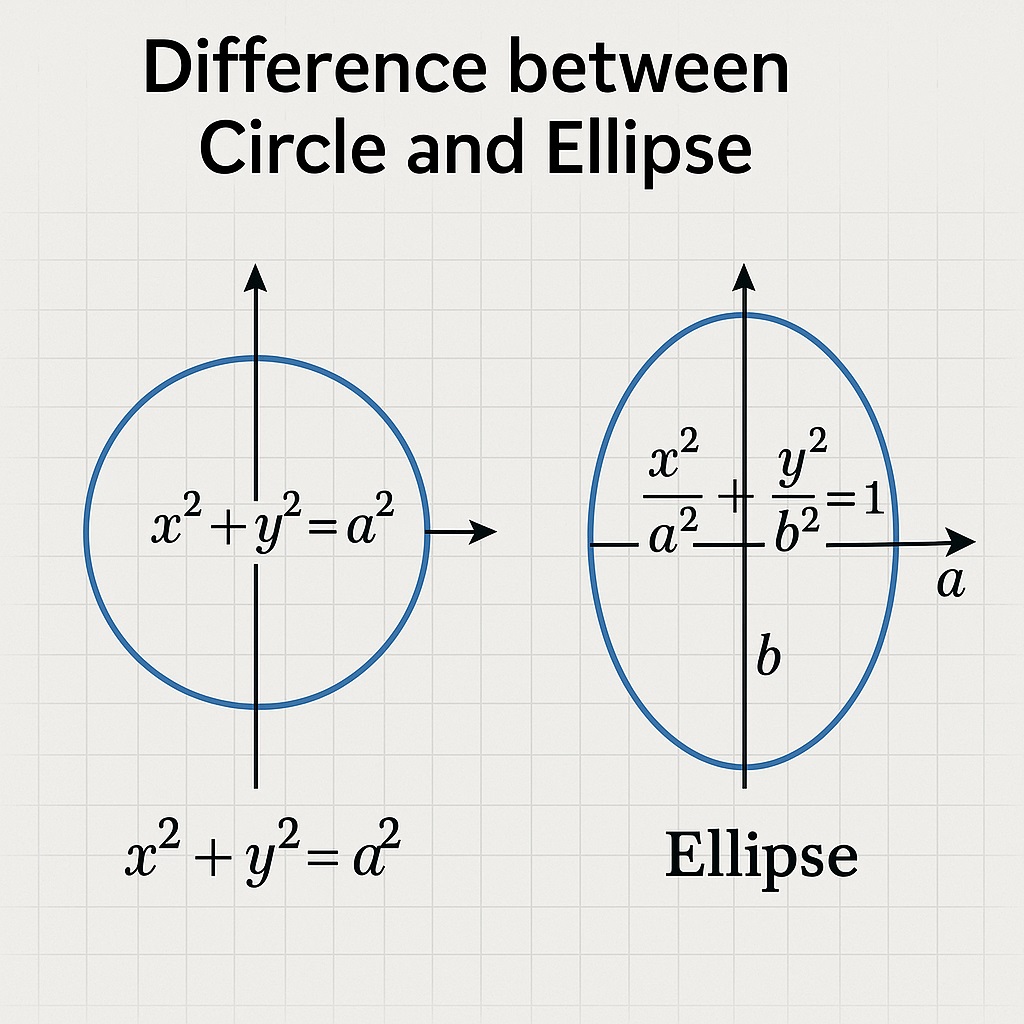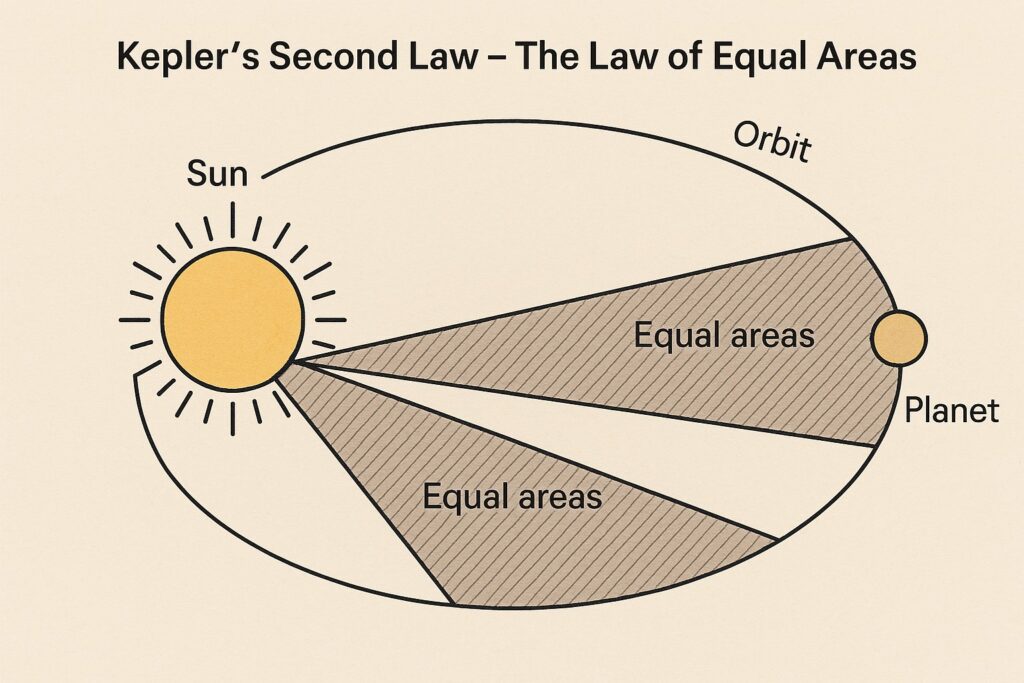Johannes Kepler, a scientist from the 16th century, studied how planets move around the Sun. He created three important rules that explain this movement. These are called Kepler’s Laws.
Table of Contents
Kepler’s First Law
The first law of Kepler, also known as the law of ellipses, explains the orbit of a planet around the sun. It states that the path of each planet around the sun is an ellipse with the sun at one of the two foci. The eccentricity of the ellipse determines the shape of the orbit. An eccentricity of zero indicates a circular orbit, while an eccentricity greater than zero indicates an elliptical orbit.

The law of ellipses provides an accurate explanation of the observed orbits of the planets in our solar system.
-
Every planet moves in an oval-shaped path (called an ellipse) around the Sun.
-
The Sun is not in the center, but at one of the foci.

Kepler’s Second Law
The second law of Kepler, also known as the law of equal areas, explains the speed at which a planet moves around the sun. It states that the line that connects a planet to the sun sweeps out equal areas in equal times. This means that a planet moves faster when it is closer to the sun and slower when it is farther away. This law provides an explanation for the observed phenomenon that planets move faster when they are closer to the sun and slower when they are farther away.

-
A planet moves in such a way that the imaginary line connecting it to the Sun covers equal areas in equal amounts of time.
-
What it means:
-
When the planet is closer to the Sun, it moves faster.
-
When the planet is farther from the Sun, it moves slower.
-
-
But in both cases, it covers equal areas in the same time.
So, the speed of a planet changes depending on how far it is from the Sun.
Kepler’s Third Law
The third law of Kepler, also known as the law of harmonies, explains the relationship between the orbital period and distance of a planet from the sun. It states that the square of the orbital period of a planet is directly proportional to the cube of the semi-major axis of its orbit. The semi-major axis is half the distance across the longest part of the ellipse. The law of harmonies provides an accurate way to calculate the period and distance of a planet from the sun.
What it says: The time a planet takes to go around the Sun (its orbit time or year) is related to its distance from the Sun.
-
(Time)² ∝ (Distance)³
-
This means that if you know how far a planet is from the Sun, you can figure out how long it takes to complete one orbit.
-
Mercury (very close to the Sun) takes only 88 days to complete a full orbit.
-
Saturn (much farther) takes about 29.5 years to go once around the Sun.
- Isaac Newton later proved that this law is a result of the gravitational force between objects.
- The law does not depend on the mass of the planet, only the distance from the Sun and the orbital period
Applications of Kepler Law of Planetary Motion
Kepler’s laws have several practical applications. They are used to determine the orbits of planets, asteroids, and comets. They are also used in the design of spacecraft trajectories for missions to other planets. Kepler’s laws are also used to study the motion of stars in binary star systems and to search for exoplanets in other star systems.
Limitations of Kepler Law of Planetary Motion
While Kepler’s laws provide an accurate explanation of the motion of planets in our solar system, they have some limitations. They assume that the planets move in a vacuum without any external forces acting on them. In reality, planets are affected by the gravitational pull of other planets and objects in the solar system. Kepler’s laws also do not take into account the effects of relativity, which become significant at high speeds and in strong gravitational fields.
Conclusion
Kepler’s laws of planetary motion are a fundamental concept in astronomy. They provide a precise explanation of the movement of planets around the sun and have numerous practical applications. However, they have some limitations and do not account for external forces acting on planets or the effects of relativity. Despite these limitations, Kepler’s laws remain a cornerstone of modern astronomy and continue to be studied and applied today.
Read: Geography Notes